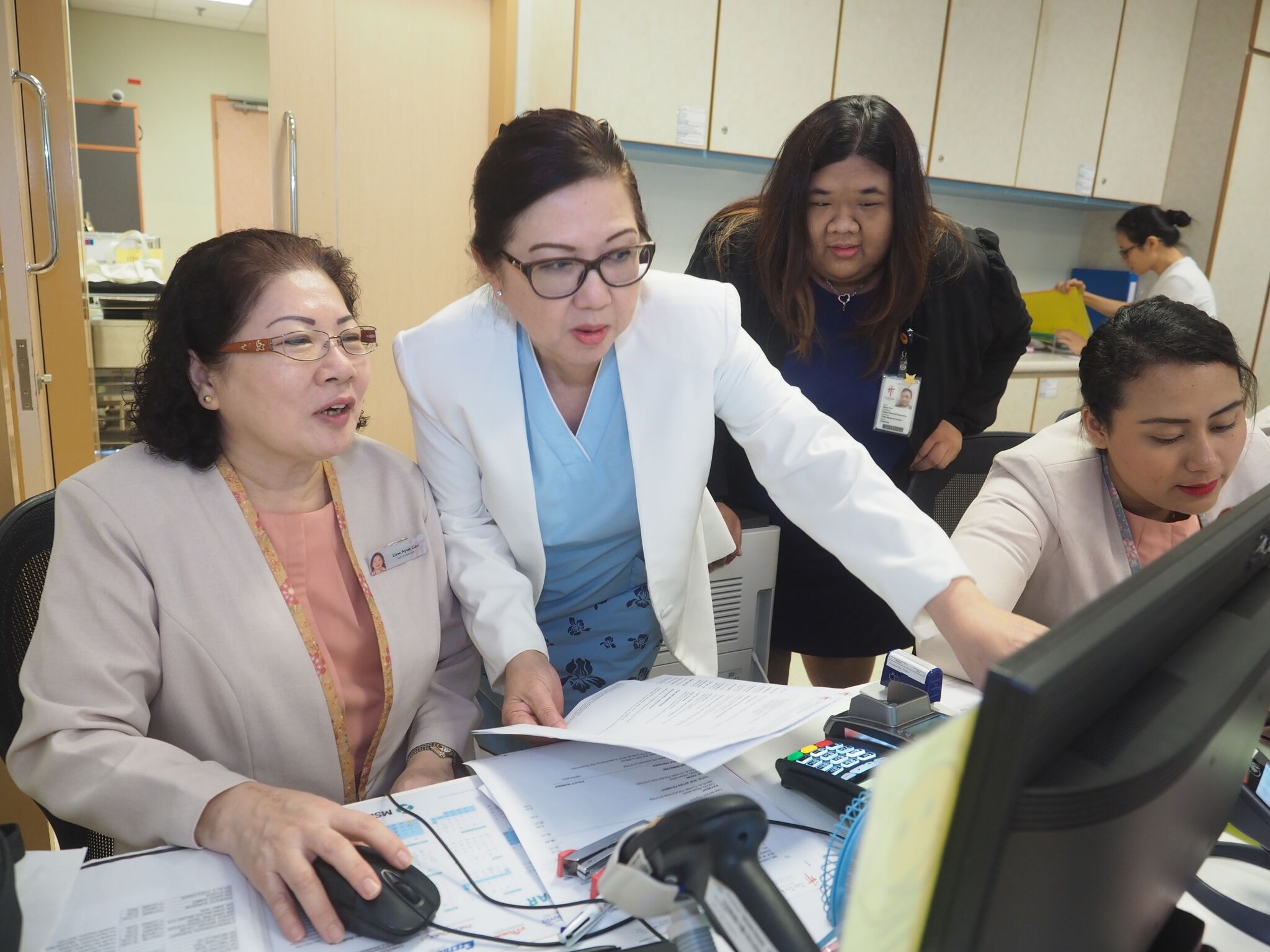Exclusive: Three ways we cut patient waiting times
By Medha Basu and Nurfilzah Rohaidi
Interview with Irene Lye, Senior Nurse Manager, Tan Tock Seng Hospital, Singapore.

Image: Tan Tock Seng Hospital, Singapore
And according to the 2015 Patient Satisfaction Survey by the country’s Ministry of Health, 85.9% of respondents rated their overall satisfaction levels with the public healthcare institutions as “excellent” and “good”. However, survey respondents also noted that waiting time was an area that “needed improvement”.
One public hospital is making simple changes to cut patient waiting times. To do this, Tan Tock Seng Hospital (TTSH) is innovating in three ways, Irene Lye, Senior Nurse Manager, tells GovInsider. “This is in order to maximise on the very limited manpower resource we have at the current moment,” she explains, adding that increasing patient satisfaction is also on her radar.
1. Roving billing
Firstly, the hospital now uses a mobile trolley for billing. “We move this trolley around like a dim sum trolley, and we approach patients who wouldn’t mind paying upfront before they complete their service in the clinic,” she explains.
This way, patients won’t need to queue to pay when they are done. “It’s straightforward enough, they can just go off without having to wait for billing,” Lye says. They can also ask questions on the types of schemes or government subsidies that are available to them, Lye adds. “This service is quite personalised.”
2. Ask the concierge
TTSH is also addressing patient enquiries in another way: with the ‘concierge corner’, Lye says. “The idea is to take these patients away from the main billing and not hold up the queue,” she says, adding that “the patient won’t get frustrated with staff that are not so familiar”.
Besides questions about their conditions, patients often ask about “advanced care planning” which involves planning how the patient would like to be managed medically, in the event that something happens to them. “They have a lot of enquiries, but in our clinic we trained two of our nurses to do that,” Lye explains.
With all of these added responsibilities, staff have to “learn a lot of things all at one go”, and it can be “a steep learning curve, especially when we have new employees coming in,” Lye notes. Training is important to Lye; the hospital holds classes for its employees, and also ensures that supervisors are around to provide support to greener staff, according to her.
3. A friendly face
Staff at the hospital are now also “more proactive” at helping patients, Lye says. As part of efforts to improve patient satisfaction, TTSH employs “patient associate ambassadors” that walk around, offering assistance to “patients who look lost, look like they have a lot questions, or it appears like they are sitting down with nobody attending to them”. “We approach them, it’s the other way around,” Lye adds.
For patients who are alone and feeling a little fearful, or cannot speak English, a friendly face helps to make them feel more at ease. “In this way, our patients feel better and cared for in many ways.”
4. Focus on training
Lye also works closely with ancillary staff called “patient service associates”. These associates used to carry out clerical work, collect payments, answer calls and make appointments, Lye says; now, she is encouraging them to take up “very basic nursing skills like help us with taking blood, and maybe taking ECG”.
As mentioned earlier, Lye believes that training is key, and at TTSH, “we actually make sure that they are competent before they embark on this role”, she explains. “They are a very rare and good type of staff; once they are trained well, they are as good as, near to nursing,” Lye remarks.
The associates are trained to carry out point-of-care testing, such as finger prick tests to test the blood sugar levels of diabetic patients, among others, Lye says. With these added skills, the associates help to lighten nurses’ workload, so that the nurses can focus on their main priorities.
The administrative tasks that the associates used to do are then “cascaded down” to non-nurses, Lye adds. “We have realised that [the associates] are more talented than just that role.”
5. Getting into new gadgets
As TTSH builds new developments, it will also continue to innovate. The hospital has plans to build a new cardiology clinic in a few years’ time, and Lye is “thinking of using things like tablets to gather patient feedback, for education” in waiting rooms.
Tablets and other such gadgets will be funded by the hospital’s Innovation Fund, which allows nurses to test ideas that may improve their work environment. Total spending ranges from S$10,000-30,000 (~US$7,259-21,700) annually, and funding for each individual project ranges from a few hundred dollars to a maximum of S$1,000 (~US$726).
And what inspires Lye to innovate? “It’s exciting whenever you have something new that will ease your work. I think it’s exciting for everybody,” Lye exclaims. Thanks to her efforts, she was recognised with the Distinguished Star Manager award at the recent Excellence in Public Service Awards, which was organised by Singapore’s Public Service Division.
Lye predicts that in the future, robots could help “more aged workers” carry heavy things, or lessen the manpower needed for certain tasks. “Or you don’t need anybody, if it’s safe enough to depend on the robot to do the job,” she points out.
Beyond using flashy new technologies, TTSH is improving services in small ways which make a big difference in patient experience.